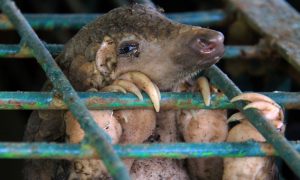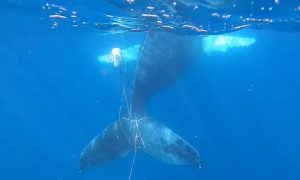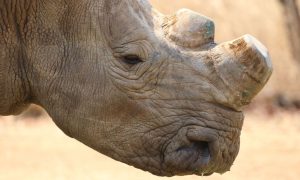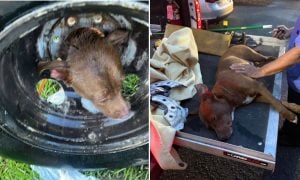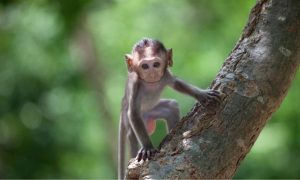A lone moose died this week in Vermont, succumbing to exhaustion and drowning in Lake Champlain after crowds of people swarmed to take his photo.
Fish and Wildlife Officer Robert Currier said the moose swam across the lake from New York to South Hero, Vermont. Already weak from the long swim, the animal climbed onto land but was scared due to the groups of people gathering to take photos, heading back into the water.
Currier arrived on the scene moments before the animal drowned.
“It was really rough out there, probably 4 to 5-foot swells and high wind,” said Currier. “It was struggling pretty good at that point. We were waiting for a boat to respond to try to assist it, but before the boat arrived, it had drowned.”
Wildlife officials issued a timely warning, advising people who observe wildlife of any kind to maintain a respectful distance, both for their own safety and that of the animal.
“It is amazing to see these creatures, but they are wild animals and should be left alone/viewed from a distance,” said Sheriff Ray Allen. “If you see a large animal like this, please report to Vermont Fish and Game immediately to avoid this type of situation.”
Endangering wild animals by trying to get a great shot or attempting the ultimate “selfie” is a dangerous and cruel act. Across the globe, people and animals are injured or killed when individuals recklessly attempt to pose with wild animals. Earlier this year, a man in India was mauled to death by a bear while attempting to take a selfie — the bear also suffered injuries during the incident. Last year, a baby dolphin died after being pulled from the ocean for repeated selfies in Argentina.
Although these incidents happened outside the US, our nation is by no means innocent of such cruelty. World Animal Protection (WAP) and Toronto-based organization Grassriots studied the prevalence of wildlife selfies on social media last year and shockingly found that 41% of these inappropriate images were posted from the United States.
“These are people who love animals, they want to have an authentic experience with an animal, and this just isn’t it,” said WAP spokesperson Cassandra Koenen. “Getting too intimate with animals for the purpose of taking photographs is an attitude we need to change.”


